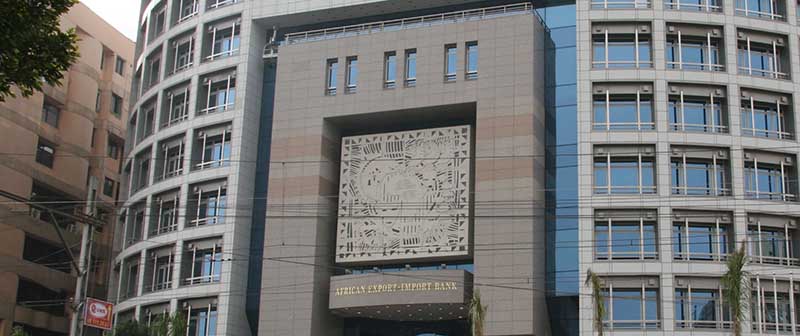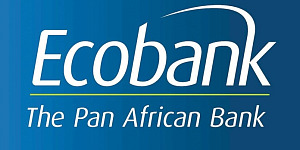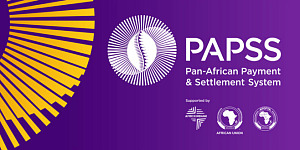Fitch Ratings has downgraded African Export-Import Bank's (Afreximbank) Long-Term Issuer Default Rating (IDR) to 'BBB-' from 'BBB'. The Outlook is Negative. Fitch has also downgraded Afreximbank's Short-Term IDR to 'F3' from 'F2' and the long-term ratings on the bank's Global Medium-Term Note Programme and debt issuances to 'BBB-' from 'BBB'.
Key Rating Drivers
Downgrade Reflects Higher Solvency Risk: The downgrade of Afreximbank's ratings reflects the downward revision of our solvency assessment from 'a-' to 'bbb+', principally reflecting 'high' credit risks (previously 'moderate') and 'weak' risk management policies (previously 'moderate'). The increased credit risk stems from the rise in the bank's non-performing loans (NPLs) ratio as calculated by Fitch, which exceeded the 6% 'high risk' threshold outlined in Fitch's criteria at end-2024.
The revision of risk management to 'weak' reflects low transparency in the recent reporting of loan performance relative to multilateral development bank peers and that Fitch's definition of NPLs differs from the bank's approach, which makes use of flexibilities offered by IFRS 9.
Negative Outlook Reflects Restructuring Risk: The Negative Outlook reflects the risk that the debt owed to Afreximbank by some of its sovereign borrowers might be included in the perimeter of these sovereigns' debt re-structuring. This would put pressure on our assessment of the bank's policy importance and heighten the risk associated with its strategy.
SCP Drives Ratings: The ratings are driven by the bank's Standalone Credit Profile (SCP) of 'bbb-', reflecting the lower of the solvency ('bbb+') and liquidity ('a') assessments, and its 'high risk' (-2 notches) business environment. The solvency assessment of 'bbb+', which Fitch has revised from 'a-' at the previous review, balances the bank's 'strong' capitalisation and 'moderate' risk profile.
Low Transparency, Weak Risk Management: Fitch has revised its assessment of Afreximbank's risk management policies to 'Weak' from 'Moderate' to reflect recent cases of weak transparency on loan performance relative to peers as well as the bank's increased risk from its sovereign loan portfolio.
NPL Driven Up by Restructurings: Based on its own criteria of loan performance, and publicly available information, Fitch considers the exposure to the Ghana sovereign (2.4% of loans) as non-performing (it considered this exposure as performing at the last review). Combined with other exposures that Fitch considers non-performing (such as South Sudan, 2.1% of loans, and Zambia, 0.2%), Fitch's own measure of the NPL ratio deteriorated to 7.1% at end-2024, surpassing the 6% 'high' risk threshold. In contrast, Afreximbank's reported NPL ratio (which excludes the exposures to Ghana, Zambia and South Sudan) improved to 2.3% in 2024 (2023: 2.5%).
NPL Assumed to Decline: We assume the Fitch-calculated NPL ratio will fall below 6% by end-2027, reflecting continued strong loan growth and our assumption that some of the exposures currently in arrears will resume loan repayment before the end of the forecast period. We note that the bank operates with a high level of collateral and credit risk mitigants and has already taken relatively large provisions on some sovereign exposures, which would reduce any potential further negative financial impact for the bank.
Increased Business Profile Risk: The 'high risk' business environment assessment partly reflects the bank's exposure to a 'high risk' operating environment, with weak credit quality, low income per capita and high political risk in the countries of operation. Our assessment of Afreximbank's business profile risk remains 'medium' but is negatively affected by the low transparency in reporting loan performance, which has led to a revision of the quality of governance assessment to 'high risk' from 'medium risk'. The potential inclusion in sovereign debt restructurings would likely lead us to revise our currently 'low risk' assessment of the bank's policy importance.
Strong Capitalisation: Fitch's capitalisation assessment takes into account the 'moderate' usable capital to risk-weighted assets (FRA; 21%) ratio, the 'strong' equity to assets and guarantees ratio (E/A; 19% at end-2024) and the 'excellent' internal capital generation (ICG). Fitch expects the FRA and E/A ratios to be broadly unchanged over the forecast period to end-2027. Our projections assume 10% yoy growth in banking operations and capital injections under the general capital increase approved by Afreximbank's board of directors in June 2021 (totalling USD2.6 billion in paid-in capital, of which USD2.1 billion has been already paid).
Stable but Low Credit Quality: The average rating of loans and guarantees before accounting for credit risk mitigants was stable at 'CCC+' in 2024. The portfolio's low credit quality reflects Afreximbank's exposure to non-sovereign entities (92% of total loans), with our assessment of credit quality very weak, and sovereign borrowers with an average rating of 'B-'.
Strong Collateralisation: Fitch's credit risk assessment also takes into account a high degree of loan collateralisation (84% of total loans, including provisions, at end-2024), including cash collaterals (covering 18% of the loans) and credit insurance (6%) from 'A-' to 'AA' rated insurers, which provide an uplift of three notches above the average rating of loans to 'B+', consistent with a 'high risk' assessment.
Other Risks 'Low': Concentration risk is 'low' relative to peers, with the bank's five largest exposures accounting for 28% of the banking portfolio at end-2024, unchanged from end-2023. However, geographical concentration is high. More than half of exposures were to entities based in Egypt (B/Stable) and Nigeria (B/Stable), the bank's two largest shareholders, at end-2024. Fitch expects the concentration ratio to remain broadly stable over the forecast horizon. Afreximbank uses derivative instruments to manage FX and interest rate risks. Equity participation is expected to remain below 2% of banking operations.
Liquidity at 'a': Afreximbank's 'a' liquidity assessment reflects the 'strong' quality of treasury assets, measured by the share of treasury assets rated 'AA-' to 'AAA' (50% at end-2024 and we expect it to remain above the 'strong' threshold of 40%), and the 'moderate' liquidity buffer (defined as liquid assets-to-short-term debt, at 95% at end-2024). The bank's liquidity profile is enhanced by its access to capital markets and diversified funding sources, including credit lines (USD2.1 billion, of which USD0.6 billion was committed at end-2024) and collateral deposits. The short duration of the loan portfolio also contains liquidity needs.
No Support Uplift: Fitch assesses shareholders' capacity to support Afreximbank at 'bb-', based on the average rating of key shareholders (ARKS) accounting for more than 50% of the bank capital. The sovereign upgrades of Egypt and Nigeria, Afreximbank's two largest shareholders, in April 2025 improved the ARKS to 'B+' from 'B'. Credit risk mitigants on callable capital (covering 40% of USD4.3 billion) enhance the support capacity by one notch to 'bb-'. The support assessment also reflects the 'strong' propensity of shareholders to support the bank, which has been consistently demonstrated by ongoing capital injections and dividend reinvestments.
Short-Term Ratings Downgraded: Fitch has downgraded Afreximbank's Short-Term IDR to 'F3' from 'F2', in line with the short-term rating correspondence table in Fitch's supranational rating criteria. At a long-term rating of 'BBB-', a short-term rating of 'F3' is the only available option.










































